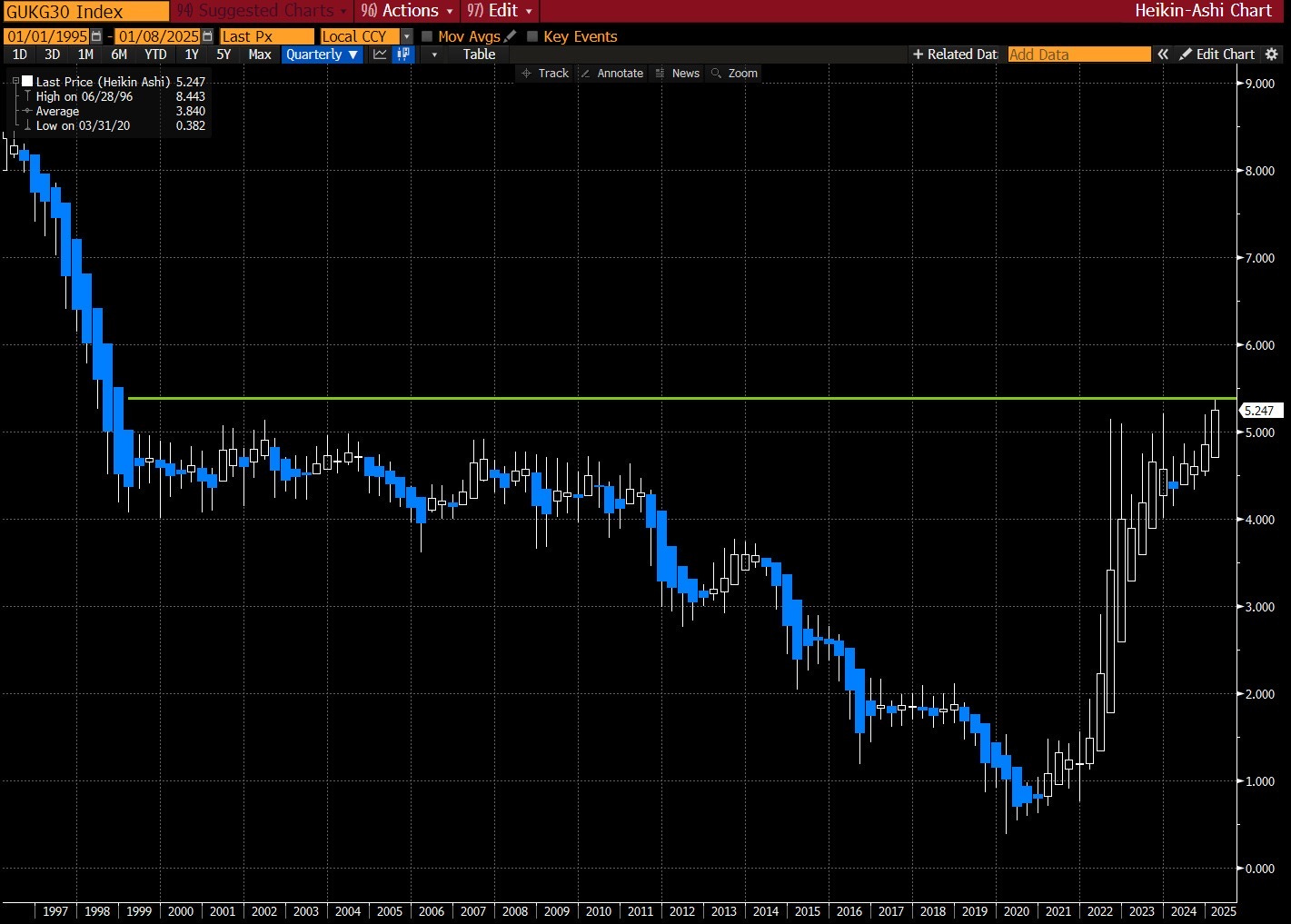Do Gentlemen Prefer Bonds?
Woes in the Gilt market.
It’s not just Gilt investors that have been concerned this week by the rising move in fixed-income markets. The broader implication of what it means for UK fiscal stability and what the markets are already telling us should flash warning signs to other asset classes.
Yet to describe this as Truss 2022 version 2.0 is slightly premature. Below, we run through why investors are concerned, why things are different versus 2022 and how to trade your way around what could be coming.
What’s The Big Deal?
Around the globe, Sovereign bond yields have been ticking higher this week. In the U.S., the 10yr Treasury yield continued the move higher that has been observed since the end of September. It’s now up 100bps from those mid-September lows:
The move higher in Q4 was characterised mostly by the feeling that the Fed wouldn’t be able to cut as much as the market was pricing in the short term, given rising inflation expectations, strong economic data and fiscal spending policy plans from the President-elect.
We shouldn’t forget that we’re not even a third of the way through January. The moves in the Treasury space are simply a continuation of what we’ve seen over the past couple of months. Yes we took a pause over the holidays, but nothing has materially changed in that period. So, although the picture in the US is amplified by certain tenors closing in on the psychologically key 5% level, the underlying reasons behind this move aren’t new and shouldn’t surprise investors.
However, the story here in the UK is somewhat different. Of course, there is some correlation in yield movements from the US to the rest of the world, including the UK. Yet whereas the US 30yr is at the highest level since November 2023, the UK 30yr is at the highest level since 1998!
Clearly, this is a different situation than across the pond and one that warrants more attention.
Reasons For UK-Specific Moves
There are two main reasons that we can assign to the movements in the Gilt markets:
Worsening Economic Outlook
Fiscal Stability Concerns
The economic outlook isn’t something that has just started to spark concerns this week, but the miss in the Services and Composite PMIs on Monday and the MoM fall in the Halifax House Price index (-0.2% vs +0.8% exp) didn’t help.
Remember back to December, when final data published mid-month revealed flat GDP growth (0%) for Q3 compared to the previous quarter. So, on the one hand, we have non-existent growth, but what about inflation?
The November print of 2.6% marks the highest figure for headline CPI since March:
So, as for the outlook for 2025, we’re looking at a low-growth, rising inflation scenario. The textbook definition of stagflation.
Now let’s turn to fiscal concerns, which is more of the short-term driver in price action for Gilts.
Back in last year’s autumn Budget, the new Chancellor, Rachel Reeves, announced a £40bn tax-raising package, which she said would help to eventually balance the books for the UK. The promise was that day-to-day public spending would balance with tax receipts by 2029-30.
In these forecasts, she gave herself £9.9bn worth of headroom. One reason for the headroom is that the financing costs of new borrowings (i.e. from Gilt issuance) are unknown. The problem now is that as yields rise, the cost of issuing new debt increases. The Government’s current interest bill is in excess of £100bn, so you don’t need a huge move to wipe out the £9.9bn headroom and suddenly put us in a fiscal situation whereby the books won’t balance.






